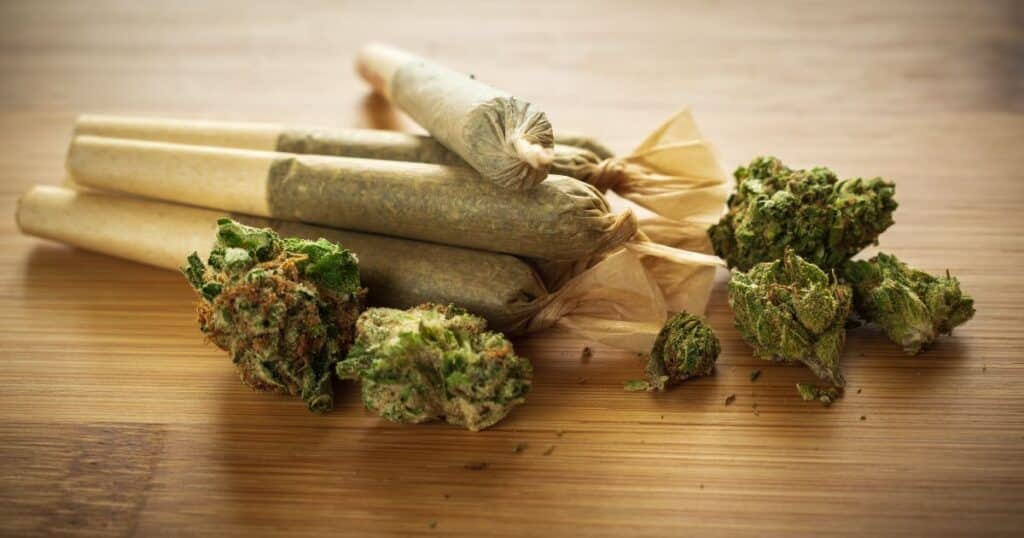Note from the author: We are making generalizations and exaggerations in this article to help explain our points. We don’t actually believe that all pre-rolls are horrible, or that manufacturers produce them with bad intentions.
The pre-roll category has a bad reputation. Pre-rolls are largely seen as low-quality products that people grudgingly purchase when they need convenience.
The data backs that up: even amongst regular pre-roll consumers, the vast majority of them would still prefer a joint rolled by hand [2023 Oregon Pre-roll Market Report]. Unfortunately, the perception of the category is mostly right! Pre-rolls ARE, generally, low-quality products.
But why? And what can we do about it? Read on.
The Source of the Problem
Virtually all of the problems associated with pre-rolls are derived from a single source: cones. The cone form factor and the manufacturing process used to create them are the scourge of the pre-roll category.

They are the shackles keeping pre-rolls from achieving their full potential, and delivering on their promise: convenience, but not at the cost of quality.
The Hot Dogs of the Cannabis World
Why do so many manufacturers use low-quality flower in their pre-rolls? In the early days of the legalized industry when flower prices were soaring, anybody manufacturing pre-rolls typically did so as an avenue to get rid of any extra material that wasn’t good enough to be sold as flower.
They were an afterthought, almost a novelty product. It was a place for brands to dump their odds and ends and squeeze a little more revenue out of each harvest. Flower was the superstar and the money maker, while pre-rolls were like the disappointing middle child that you mostly used as an example for what your other kids ought not to be.
Thankfully, as more and more companies do their best to introduce higher-quality pre-rolls into the market and the category itself continues to grow, that attitude is changing. But the fact that you still see “penny joints” as promos and add-ons means we still have a little way to go.
Good Flower Gone Bad
There’s another big reason brands don’t typically use high-quality flower in their pre-rolls. Because they can’t. To work in a cone-filling machine, the flower needs to be ground finely and extremely dried out. (More on this in a moment.)
That means that good flower ends up being turned into sub-par material so that it can be run through an automated cone-filling machine. Even if a producer truly does want to use high-quality flower, it’s very difficult to create a pre-roll that will present that flower well and give the consumer the positive experience they are seeking or have been promised.
Hold the Trim, Please
We have potential customers ask us what trim-to-flower ratio they should be using. Our answer: 100% flower, 0% trim. The more trim that is added, the harsher, less flavorful, and less efficacious the product will be. The interest in adding trim isn’t pure greed, however.
Because with cone-stuffing machines you have to dry the flower out, a lot of the weight of the product is lost. In other words, a 1g joint with moister flower actually contains less flower than a 1g joint with over-dried flower. Manufacturers often try to recoup some of that lost weight and protect profits by adding trim.
Wet Won’t Work
Cone-stuffing machines use either vibration or a tamping mechanism (or both) to fill a cone. As we mentioned above, for that to work, the flower has to be dried to a moisture level in the range of 6-8%. If it’s too moist (which also often means sticky) it won’t create consistent density throughout the cone and won’t fill correctly.
That leads to canoeing, the joints not staying lit, an uneven draw, and other problems. Over-dried flower ruins the flavor, makes it a harsher smoke, and even degrades the efficacy. Less moisture = less terps and less cannabinoids = a poor smoking experience.
By comparison, with the RollPros Blackbird, fresh sticky flower is actually a requirement, (we recommend our partners use 10-12% moisture). The Blackbird simply doesn’t perform well with dried out, pulverized flower.

Sustainability Matters, Especially to Your Customers
Most pre-roll consumers don’t know this, and even many brands and manufacturers don’t realize it either: cones are mostly made by hand.
Yep, you read that right. It’s the dirty little secret of the pre-roll space. Pre-rolled cones are made by hand primarily in India, Indonesia, China, and a few other places that have questionable labor laws and practices.
We’re not going to point to specific businesses or brands, but it’s something that both the industry and consumer need to be aware of.
Shipping is also a major contributor to the environmental impact of pre-rolls. Roughly 250,000-350,000 cones fit on a standard pallet, and they are shipped by sea from the other side of the world. That’s a LOT of carbon being used to get the cones to manufacturers in the US, even though the boxes are mostly just air. (Cones can’t be compacted when they are shipped.)
Compare that to a bobbin of paper. (A bobbin is a standard roll of paper, which is what the RollPros Blackbird uses.) One pallet of bobbins equates to approximately 24 million joints. By comparison, it would take over 60 pallets to ship 24 million cones. If sustainability is important to your customer or your brand message, this is something to consider.
Pre-roll problems BE GONE
We’ve outlined a number of issues with pre-rolls that are all traced back to cones, and now we present the solution that fixes those problems. Surprise, surprise, it is our very own RollPros Blackbird. But just because this is a marketing piece doesn’t mean it isn’t true.
We’ve ditched the cones, and the trickle down effect is a fix for virtually all of the problems outlined above. The blackbird doesn’t use cones, it uses rolls of paper. It doesn’t tamp or vibrate flower, it rolls joints, just like you do.
It requires fresh, sticky flower to produce good results. No, it isn’t a silver bullet, but with the right operator and experience, brands deploying a Blackbird can produce higher quality, more profitable products. It’s time to free pre-rolls from the cone-shaped shackles!
Enjoyed that first hit? Come chill with us every week at the Friday Sesh for a freshly packed bowl of the week’s best cannabis news!
- Can CBD Help Combat Alcohol Binge Drinking? A Study Suggests It Might
- Missouri Hemp Farmers Form Missourians for a Single Market in Attempt to Redefine Regulations
- Restaurant Spotlight: 1811 in Berlin – Timeless Taste in Charlottenburg
- Texas Governor Abbott Vetos Senate Bill 3, Calls For Special Legislative Session
- Petition Calls on Meta to End Cannabis, Psychedelic, and Harm Reduction Communities Censorship
- Texas Expands Medical Cannabis Access with House Bill 46
















One Response
Thank you for your inept analysis of the pre-roll. I had no idea and this is eye opening. I advocate for alternative treatment for seniors and I know that pre-rolls are often used for convenience(especially arthritis sufferers). I will be a better consumer because of this article. https://www.linkedin.com/groups/14052679/Flower for Seniors